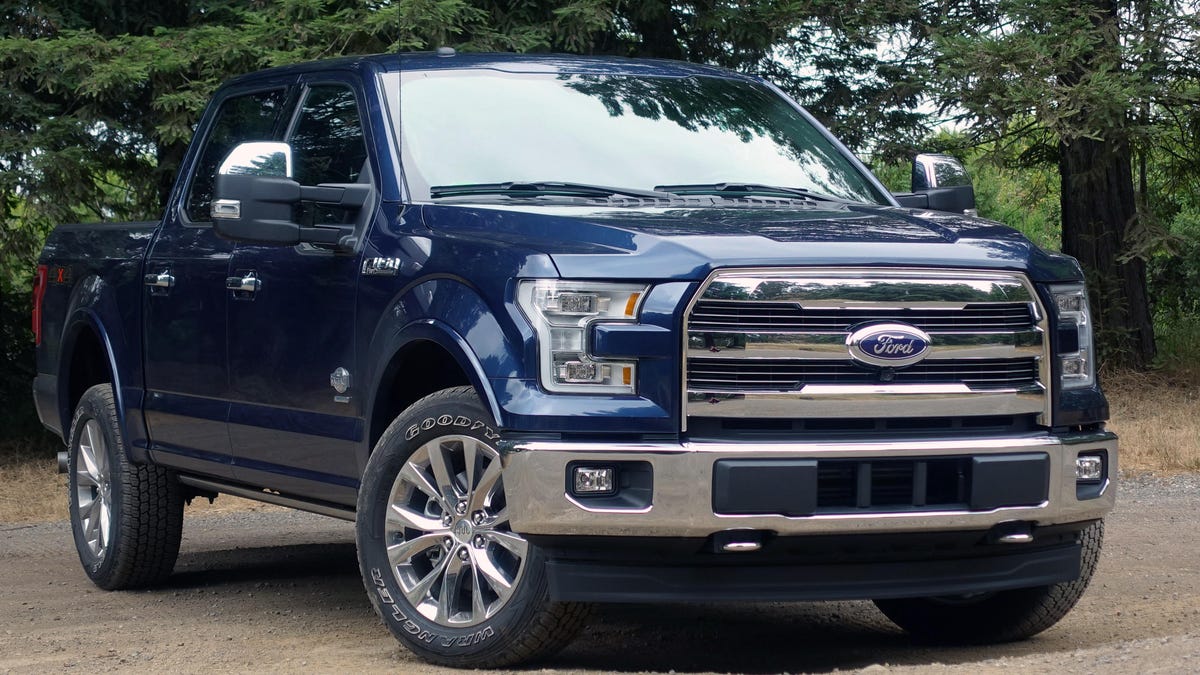The biggest and noteworthy auto recalls of 2017
Tesla, Fiat Chrysler, Honda and Ford were all bitten by the recall bug.

The auto industry witnessed a record number of recalls in 2016 reaching 52,985,779 in total. That's a steep number that was plumped up in large part due to the massive Takata airbag campaign that ultimately drove the Japanese company into bankruptcy.
To date, recalls for 2017 punch in at 28,146,661 with Fiat Chrysler, Honda, Ford, Hyundai and BMW leading the way. That's not a small number, but it's a far cry from the 2016 levels. Here's a look at some of the biggest and noteworthy auto recalls issued this year.
Fiat Chrysler
With recalls involving 3,939,250 vehicles, Fiat Chrysler took pole position in the 2017 recall race. Of those, more than 1 million units include 2013-2016 Ram 1500, Ram 2500 and 2014-2016 Ram 3500 pickup trucks. Situations such as off-roading may cause the roll rate sensing system to activate a diagnostic trouble code and disable the car's ability to detect a rollover. If that happens, both rollover airbag and seatbelt pretensioner deployment will be disabled and increase the risk of occupant injury during a crash. Updated occupant restraint controller software fix the problem.
Dodge's 707-horsepower Charger SRT Hellcat and Challenger SRT Hellcat were also summoned back to the dealer for faulty oil cooler lines. A crimped connection could fail and cause the loss of oil, causing potential fire, traction and visibility concerns. Replacing the oil cooler line on the 1,207 2017 model year cars affected solves the issue.
Honda
Of Honda's 3,319,327 recalls in 2017, more than 1.1 million were for 2013-2016 Accords. The issue involves gaps in the plastic case covering the battery sensor that may allow moisture to get into the case and come into contact with the sensor. If the moisture carries a conductive substance, such as road salt, it might cause an electric short and potentially lead to fires. Honda's fix was to install a countermeasure on cars with faulty or corroded sensors. Cars with good sensors received a temporary fix consisting of adhesive to prevent moisture intrusion until a sufficient supply of replacement parts become available.
The 2011-2017 Honda Odyssey minivans were responsible for another 806,936 recalls. Second-row outboard seats may not latch securely when being reinstalled or being adjusted side-to-side. If that happens, the seat may tip forward under moderate to heavy braking and increase the risk of passenger injury. Honda is still working on a permanent solution to the issue, but in the meantime has created an instruction sheet with explicit details on how to securely latch the seats.
Ford
Ford sells a lot of F-Series pickup trucks when a recall is issued for those, it usually covers many units. Potential bent or kinked door actuator cables and door latches that may freeze after water gets into them are responsible for a recall of 1.1 million 2015-2017 trucks. Either condition could result in the doors opening while driving even though they appear to be closed. Dealers will inspect the door latch actuator cable, repair it if necessary and install a water shield over the door latches to fix the issues.
Hyundai
Seat belt linkage problems caused Hyundai to recall 977,778 2011-2014 Sonatas and 2011-2015 Sonata Hybrids. In event of a collision, front seat belt linkages for both seat belts may detach from the seat belt anchor pretensioners and increase the chance of occupant injury. The campaign instructs dealers to inspect the connection between the seat belt linkages and seat belt anchor pretensioners and repair as necessary.
Engine issues also had Hyundai summon 572,000 2013-2014 Sonata and Santa Fe Sport models back to dealers. Vehicles with the 2.4-liter direct-injection and 2.0-liter turbocharged four-cylinders may have manufacturing errors that could limit oil delivery to the connecting rod bearings. This ultimately could lead to a seized engine and create a safety hazard while on the road. The recall has technicians inspect and potentially replace the engine short block as necessary.
BMW
A blower regulator wire harness forced BMW to recall 672,775 3 Series models. Vehicles range from 2006 to 2011 model years and include sedans, coupes, convertibles and wagons. Variations in resistance could lead to an increase in temperature, which could cause a short circuit. This could melt plastic surrounding the regulator and increase the chance of fire. Replacing the wiring and electrical connectors fixes the issue.
BMW also recalled every 2014-2018 BMW i3 electric car. Unbelted, small adult drivers may be at higher risk of neck injury in the event of a frontal crash. This fails to comply with a Federal Motor Vehicle Safety Standard. A solution is still under development, but until then BMW has issued a stop-sale for the i3.
Tesla
Tesla recalled 31,472 Model S and Model X models built between February and October 2016 for a parking brake issue. A small gear in the parking brake may fracture and prevents the brake from releasing. Tesla estimates that only about 2 percent of the vehicles recalled contain the improperly manufactured gear. Replacement of the parking brake takes less than 45 minutes at a Tesla service center.
Tesla issued a second Model X recall with vehicles equipped with the second-row fold-flat seats. Improperly adjusted cables in the seats could cause the seat back on the driver-side second-row seat to move forward during a crash. A Tesla service center will adjust the cables correctly to remedy the issue.

